Analysis of Zinc Oxide (ZnO) Surge Arrester Connected to Various Ground Electrodes
Abstract
1. Introduction
2. Experimental Arrangement
2.1. Ground Electrodes
2.2. Testing Arrangement
3. Test Results
3.1. Linear Resistive Load with a Common Ground Electrode
3.2. Surge Arrester with a Common Ground Electrode
3.3. Ground Electrodes
3.4. Linear Resistive Load with 2-rod Electrodes
3.5. Surge Arrester with Various Ground Electrodes
3.6. Comparison between Ground Electrodes with and without Surge Arrester
4. Discussion
Author Contributions
Funding
Institutional Review Board Statement
Informed Consent Statement
Data Availability Statement
Conflicts of Interest
References
- IEEE Std C62. 22-2012. IEEE Guide for the Application of Metal-Oxide Surge Arresters for Alternating-Current Systems; IEEE: New York, NY, USA, 2013. [Google Scholar]
- PC62.11/D6.0 Sep 2019. IEEE Draft Standard for Metal-Oxide Surge Arresters for AC Power Circuits (>1 kV); IEEE: New York, NY, USA, 2020. [Google Scholar]
- IEC 60099-3: 1990. Artificial Pollution Testing of Surge Arrester; IEC: Geneva, Switzerland, 1991. [Google Scholar]
- IEC 60099-4:2014. Surge Arresters-Part 4: Metal-Oxide Surge Arresters without Gaps for a.c. Systems; IEC: Geneva, Switzerland, 2014. [Google Scholar]
- Metwally, I.A. Performance of Distribution-class Surge Arresters under Dry and Artificial Pollution Conditions. Electr. Eng. 2010, 93, 55–62. [Google Scholar] [CrossRef]
- Rodríguez, M.; Francisco, R. Experimental Study of Surge Arrester Ageing using a High Impedance Current Source. In Proceedings of the 33th of IEEE International Conference on Lightning Protection (ICLP), Estoril, Portugal, 25–30 September 2016. [Google Scholar]
- Haddad, A.; Naylor, P. Dynamic Impulse Conduction in ZnO Arrester. In Proceedings of the 11th International Symposium on High Voltage Engineering, London, UK, 23–27 August 1999. [Google Scholar]
- Fang, Z.; Wang, B.; Lu, J.; Jiang, Z. Study on Impulse Breakdown Characteristics of Internal-Gap Lightning Protection Device Applied to 35 kV Distribution Line. Energies 2018, 11, 1758. [Google Scholar] [CrossRef]
- Latiff, N.; Illias, H.; Bakar, H.A.; Dabbak, S. Measurement and Modelling of Leakage Current Behaviour in ZnO Surge Arresters under Various Applied Voltage Amplitudes and Pollution Conditions. Energies 2018, 11, 875. [Google Scholar] [CrossRef]
- Christodoulou, C.; Ekonomou, L.; Papanikolaou, N.; Gonos, I. Effect of the Grounding Resistance to the Behaviour of High-voltage Transmission Lines’ Surge Arresters. IET Sci. Meas. Technol. 2014, 8, 470–478. [Google Scholar] [CrossRef]
- Hidaka, T.; Ishimoto, K.; Asakawa, A.; Shiota, K. Relationship between Grounding Resistance Connected to Surge Arresters and Lightning Surge Behavior Observed in Low-Voltage Equipment. In Proceedings of the International Symposium on Lightning Protection (XII SIPDA), Belo Horizonte, Brazil, 7–11 October 2013. [Google Scholar]
- Mancao, R.T.; Burke, J.T.; Myers, A. The Effect of Distribution System Grounding on MOV Selection. IEEE Trans. Power Deliv. 1993, 8, 139–145. [Google Scholar] [CrossRef]
- IEC 60060-1. High-Voltage Test Techniques-Part 1; IEC: Geneva, Switzerland, 2010. [Google Scholar]
- Abdul Ali, A.; Ahmad, N.; Mohamad Nor, N.; Idris, N.; Hanaffi, F. Investigations on the Performance of Grounding Device with Spike Rods (GDSR) with the Effects of Soil Resistivity and Configurations. Energies 2020, 13, 3538. [Google Scholar] [CrossRef]
- Abdul Ali, A.; Ahmad, N.; Mohamad Nor, N.; Reffin, M.; Syed Abdullah, S. Investigations on the Performance of a New Grounding Device with Spike Rods under High Magnitude Current Conditions. Energies 2019, 12, 1138. [Google Scholar] [CrossRef]
- Mohamad Nor, N. Investigations of Soil Characterisation under High Impulse Currents. Ph.D. Thesis, University of Wales, College of Cardiff, Cardiff, Wales, 2001. [Google Scholar]
- Metwally, I.A. D-Dot Probe for Fast-Front High-Voltage Measurement. IEEE Trans. Instrum. Meas. 2010, 59, 2211–2219. [Google Scholar] [CrossRef]
- Naidu, M.S.; Kamaraju, V. High-Voltage Engineering, 5th ed.; Mc Graw Hill Education: New Delhi, India, 2013. [Google Scholar]
- Dang, C.; Parnell, T.M.; Price, P.J. The Response of Metal Oxide Surge Arresters to Steep Fronted Current Impulses. IEEE Trans. Power Deliv. 1986, 1, 167–183. [Google Scholar] [CrossRef]
- Abdul Ali, A.; Mohamad Nor, N. On the Characterisations of the Impulse Breakdown in High Resistivity Soils by Field Testing. Energies 2021, 14, 2401. [Google Scholar] [CrossRef]
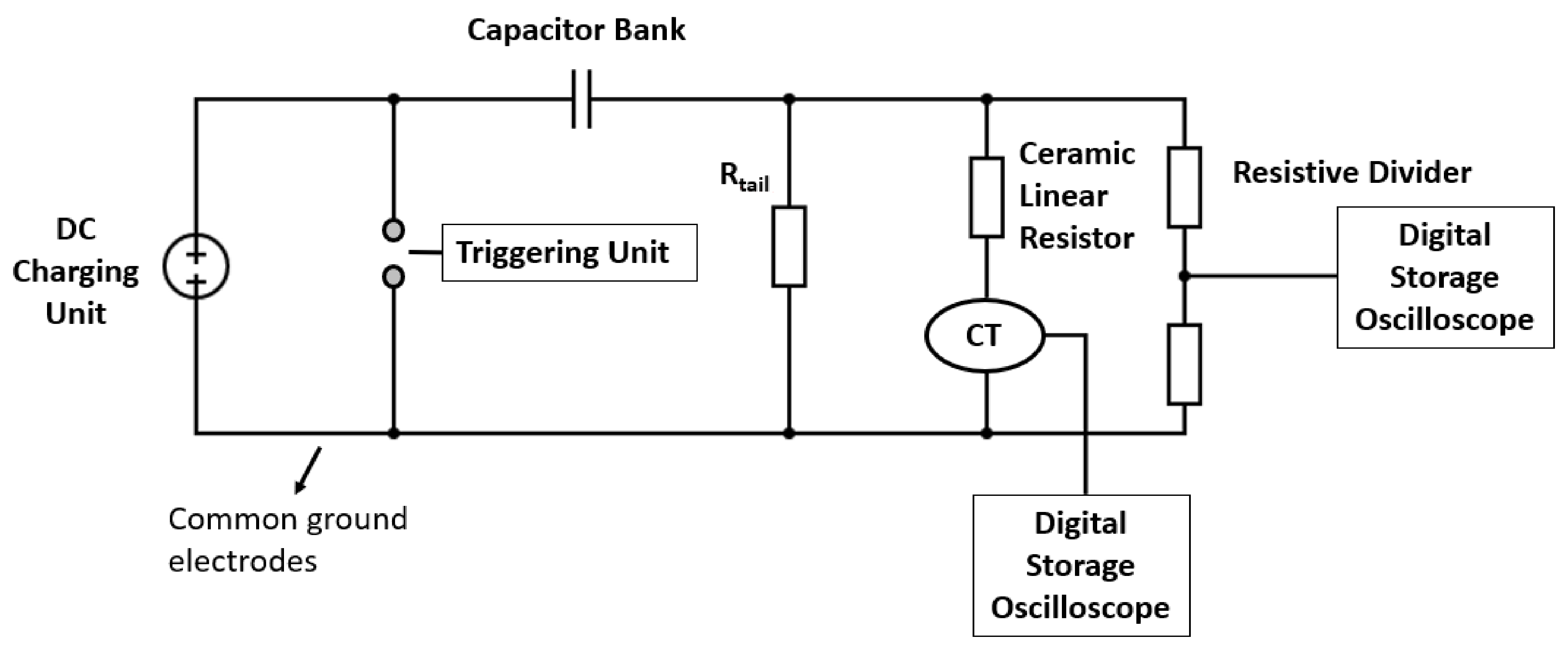


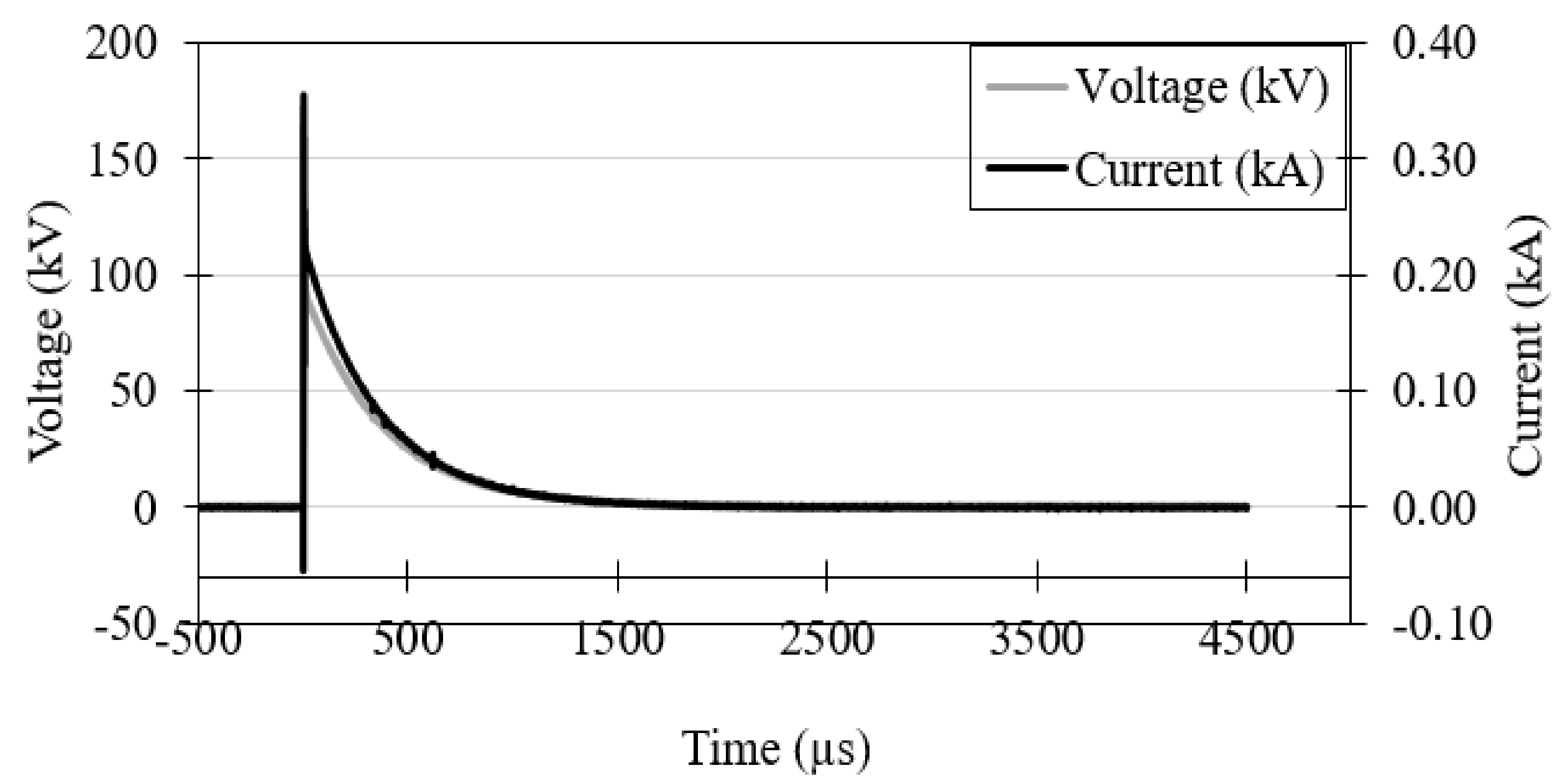

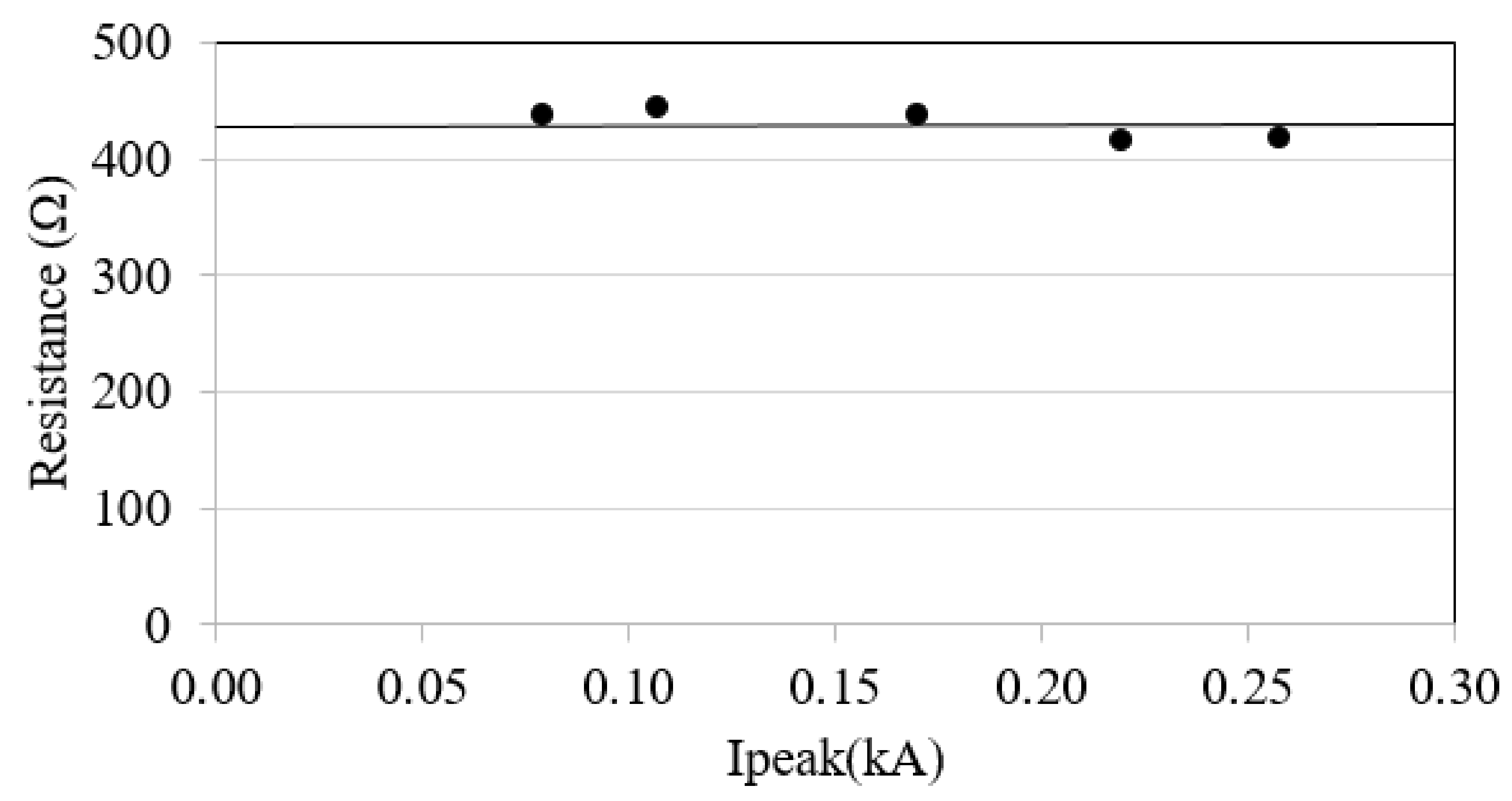
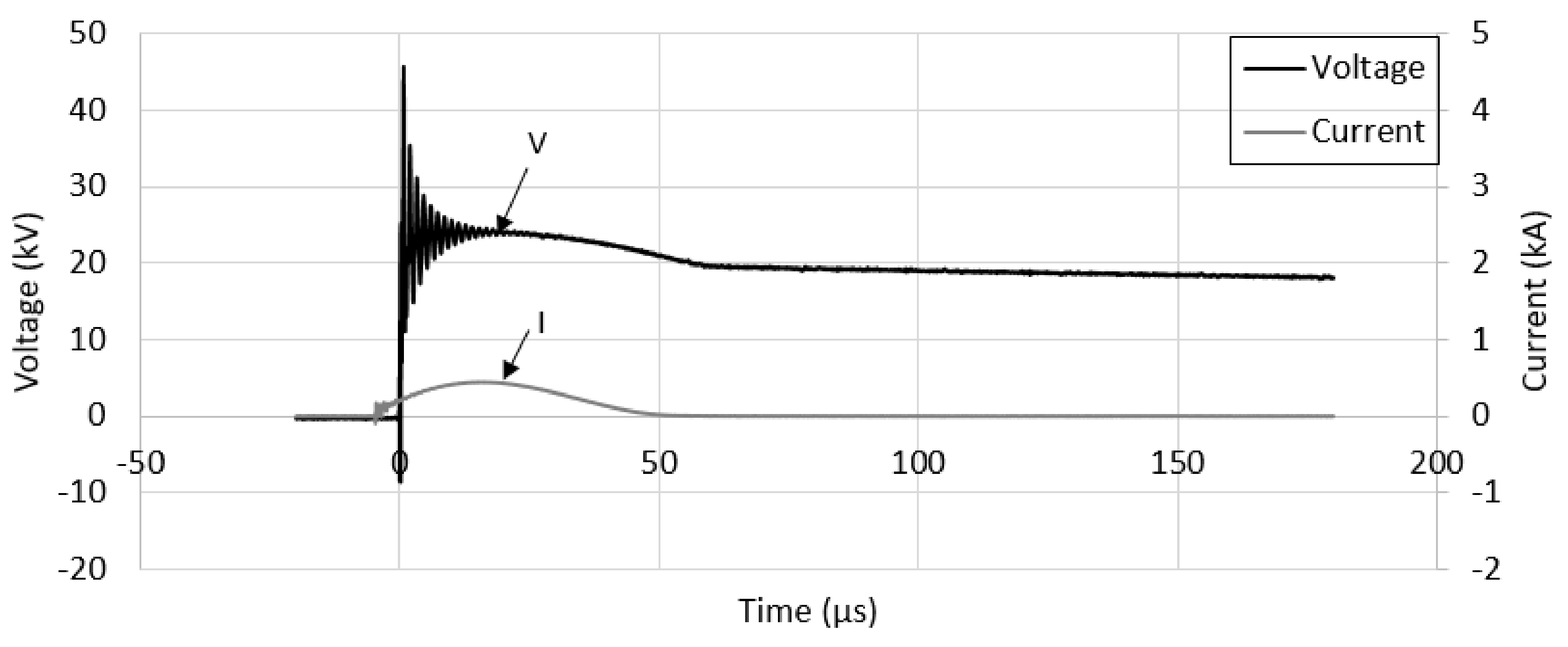

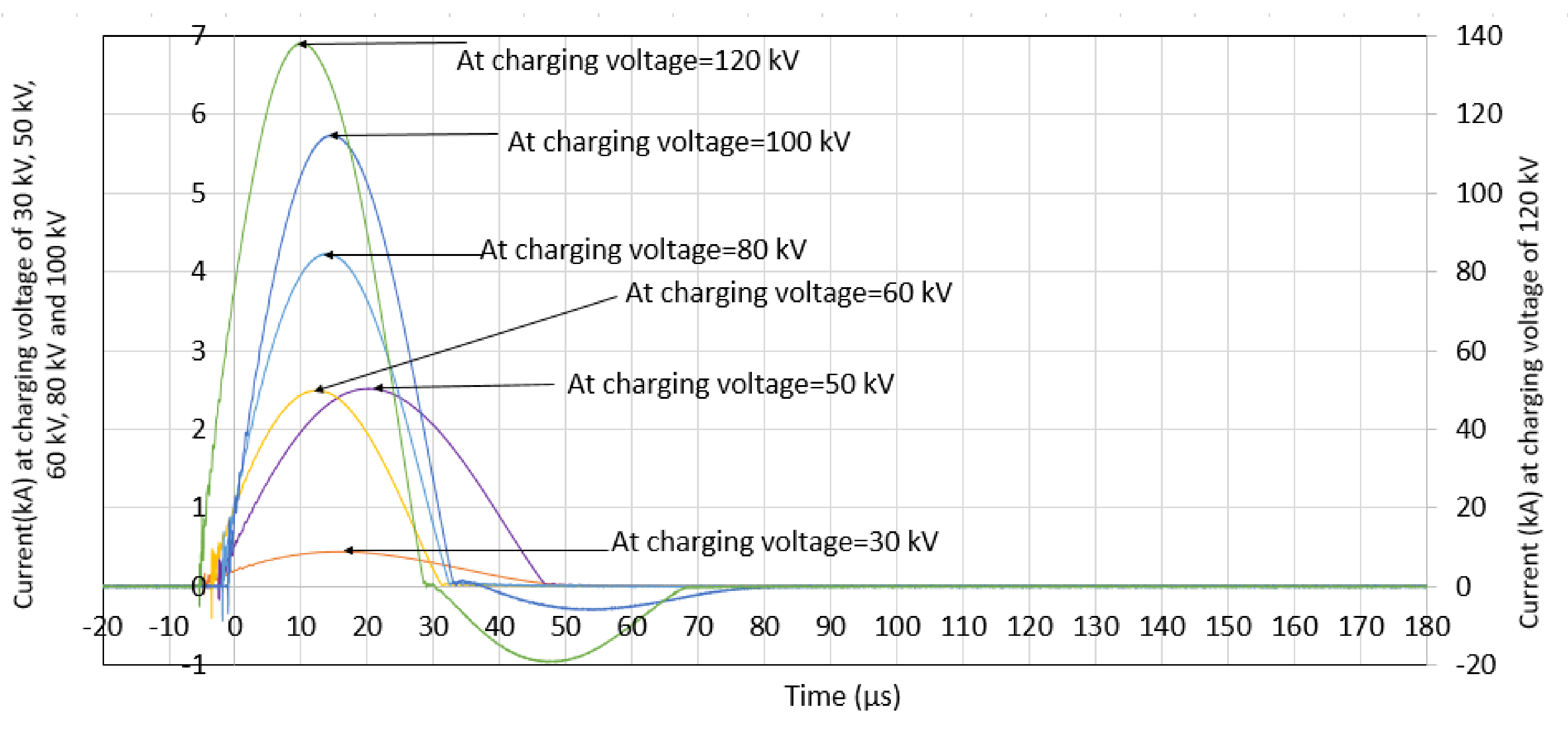
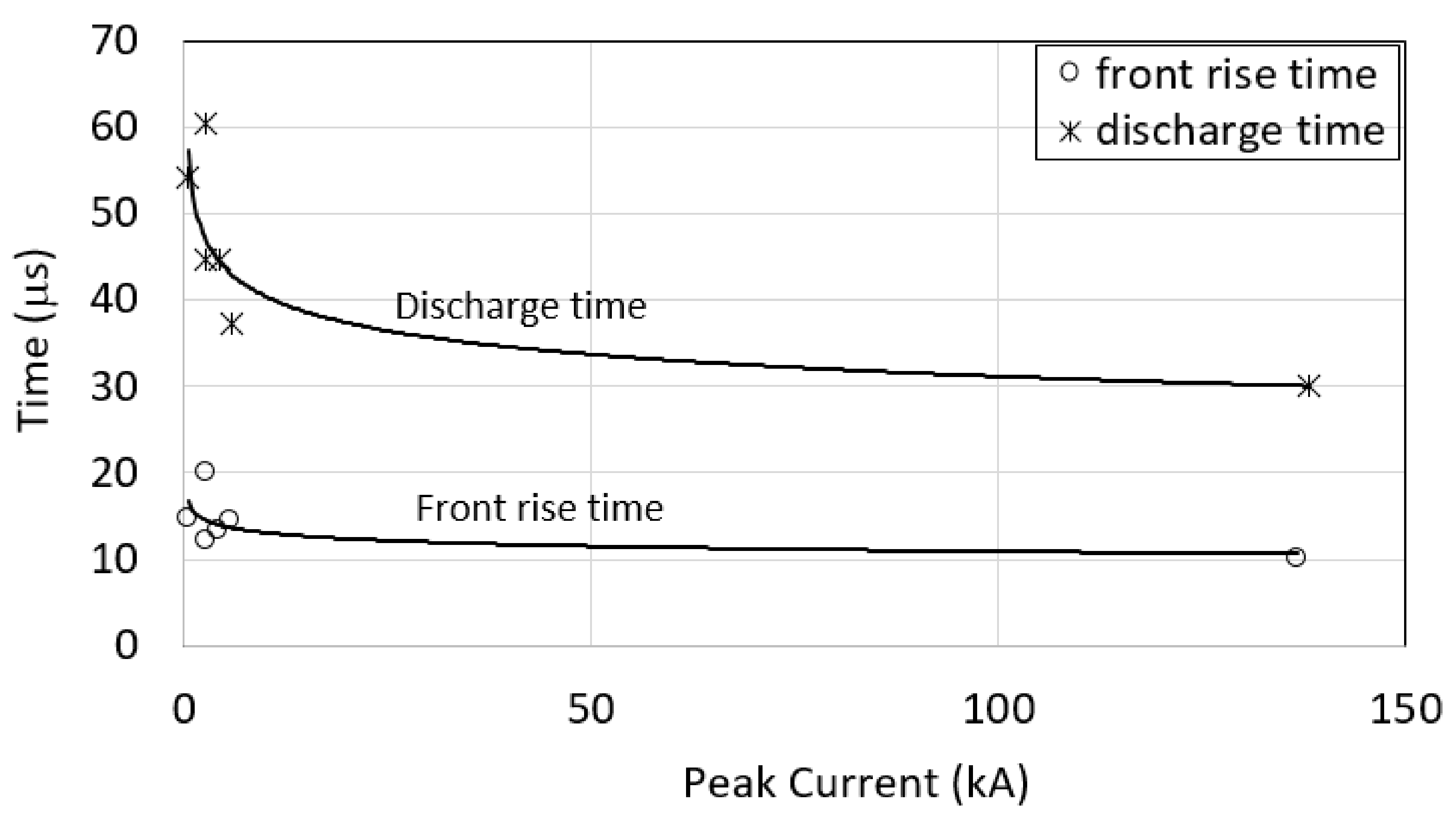
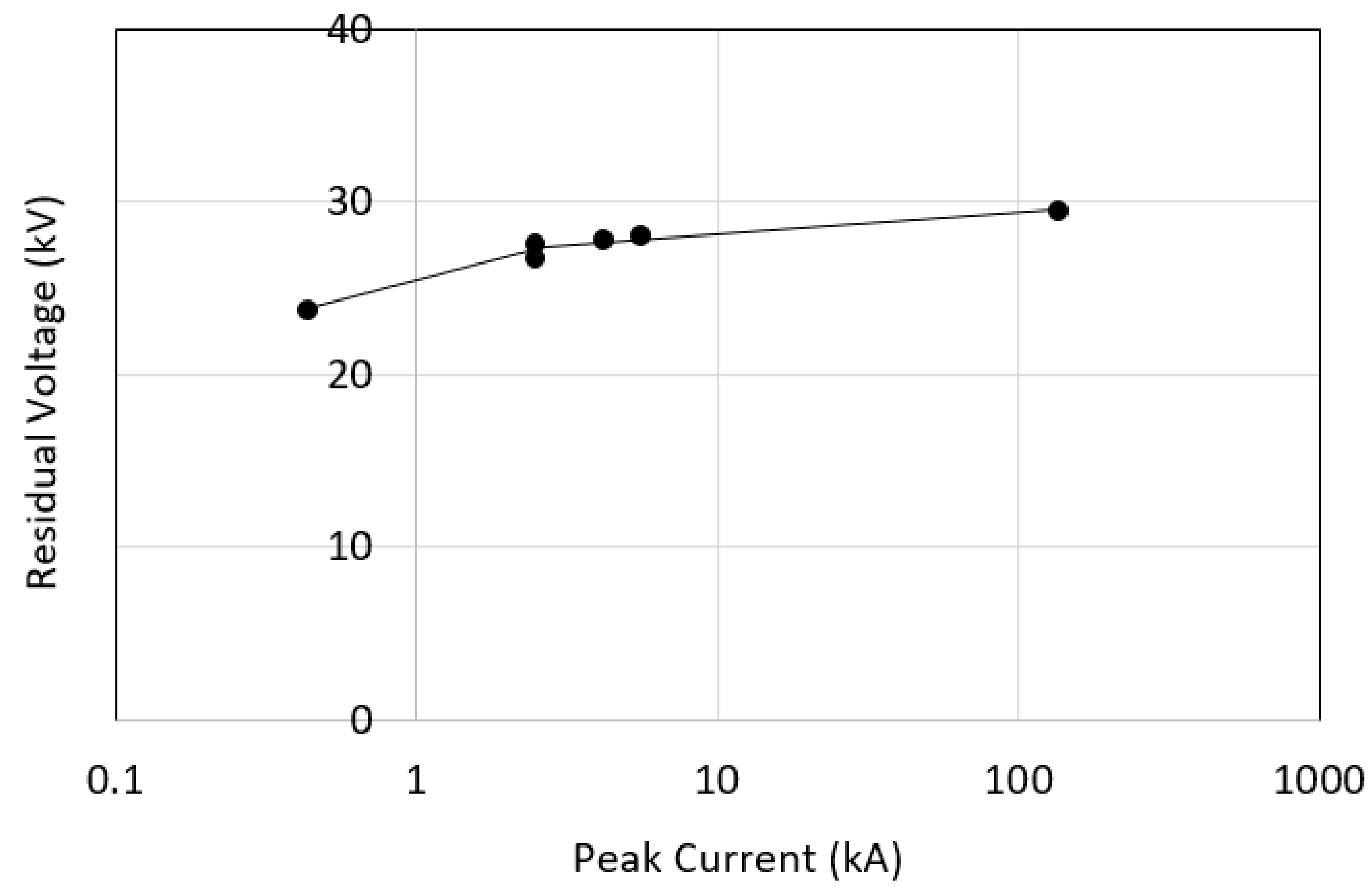

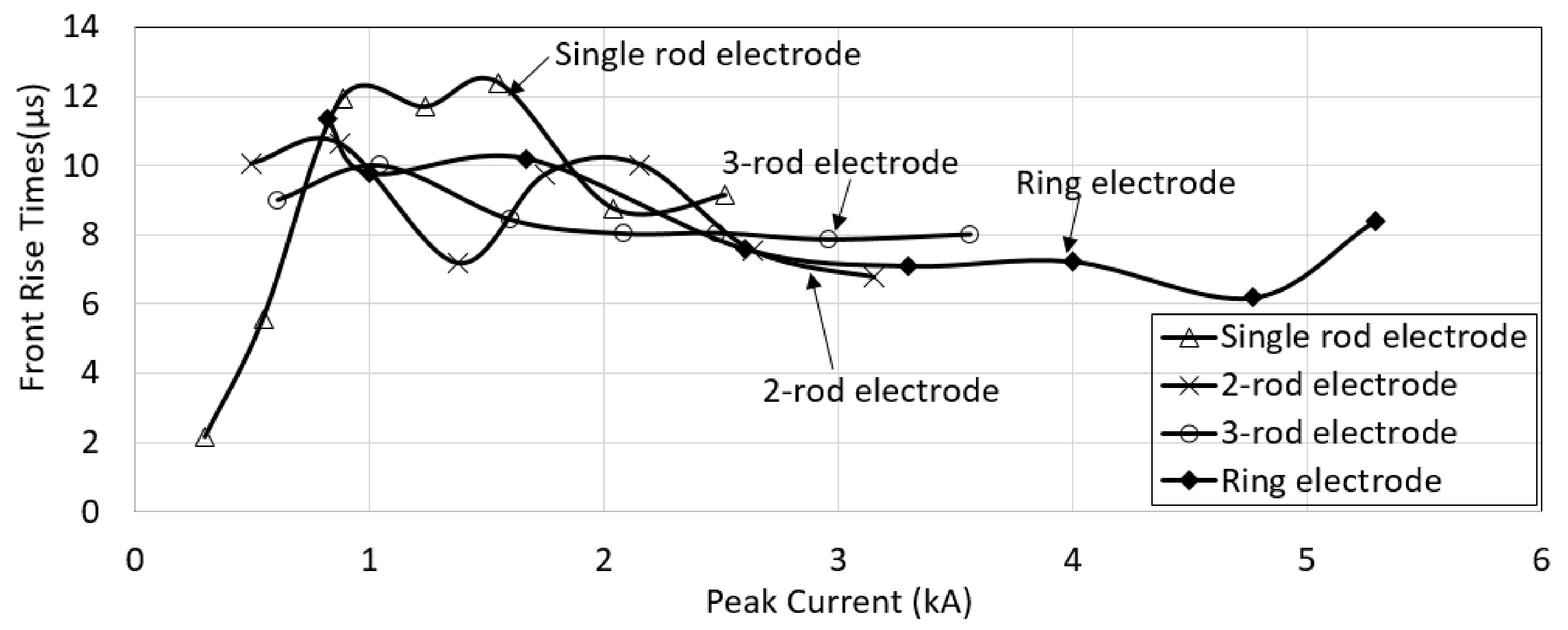
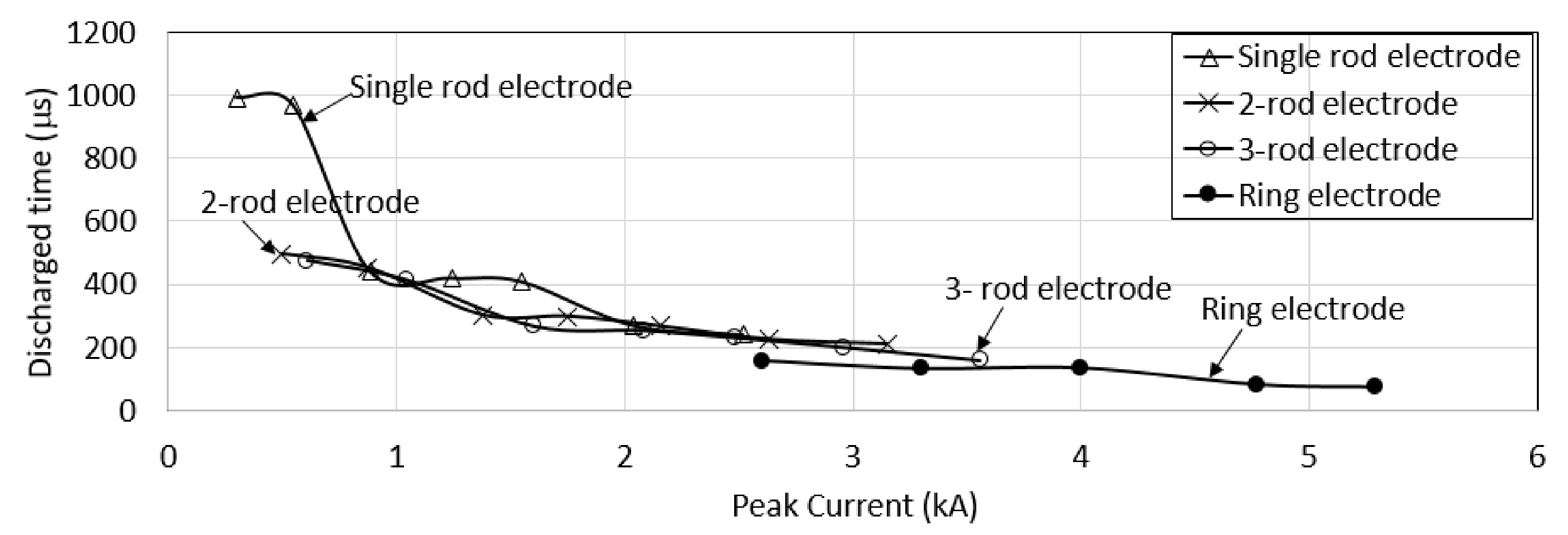

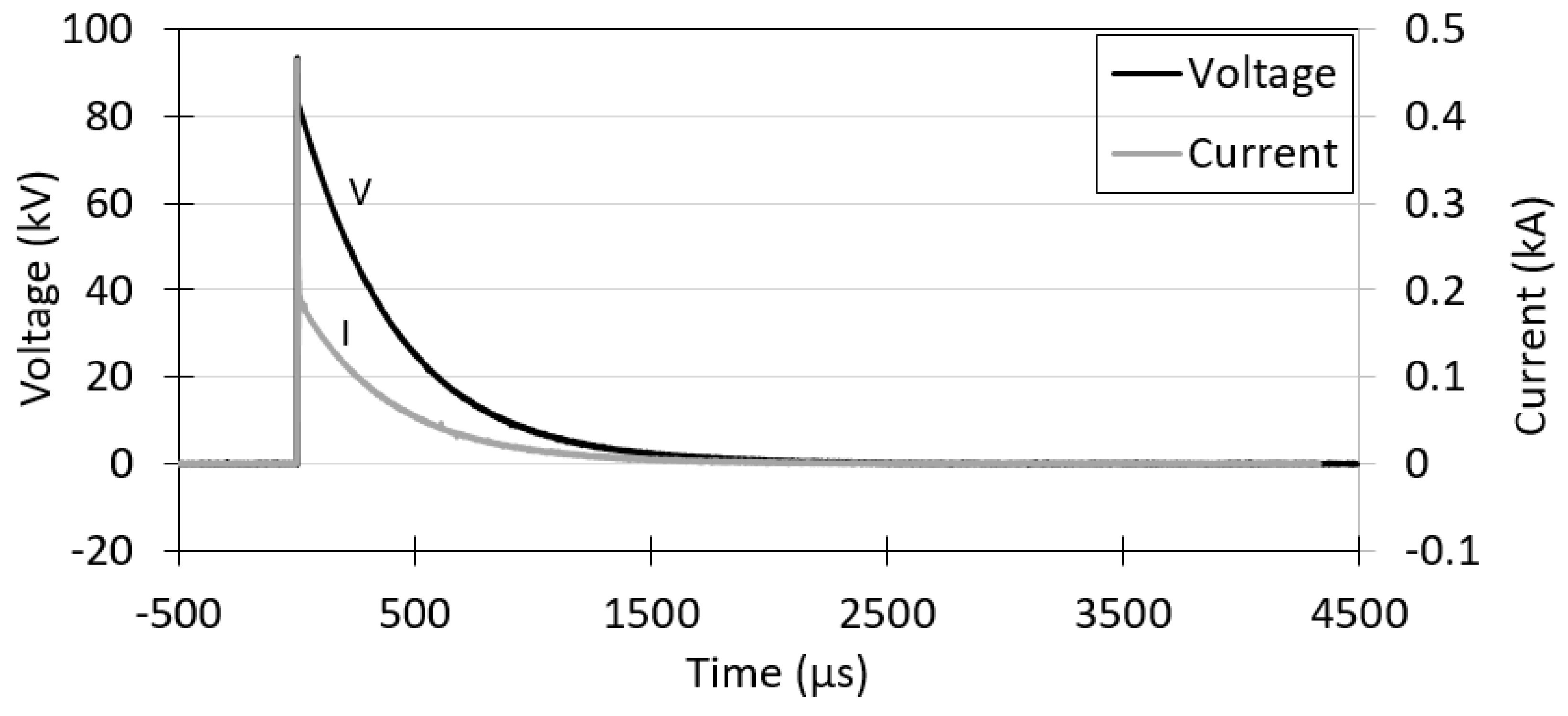
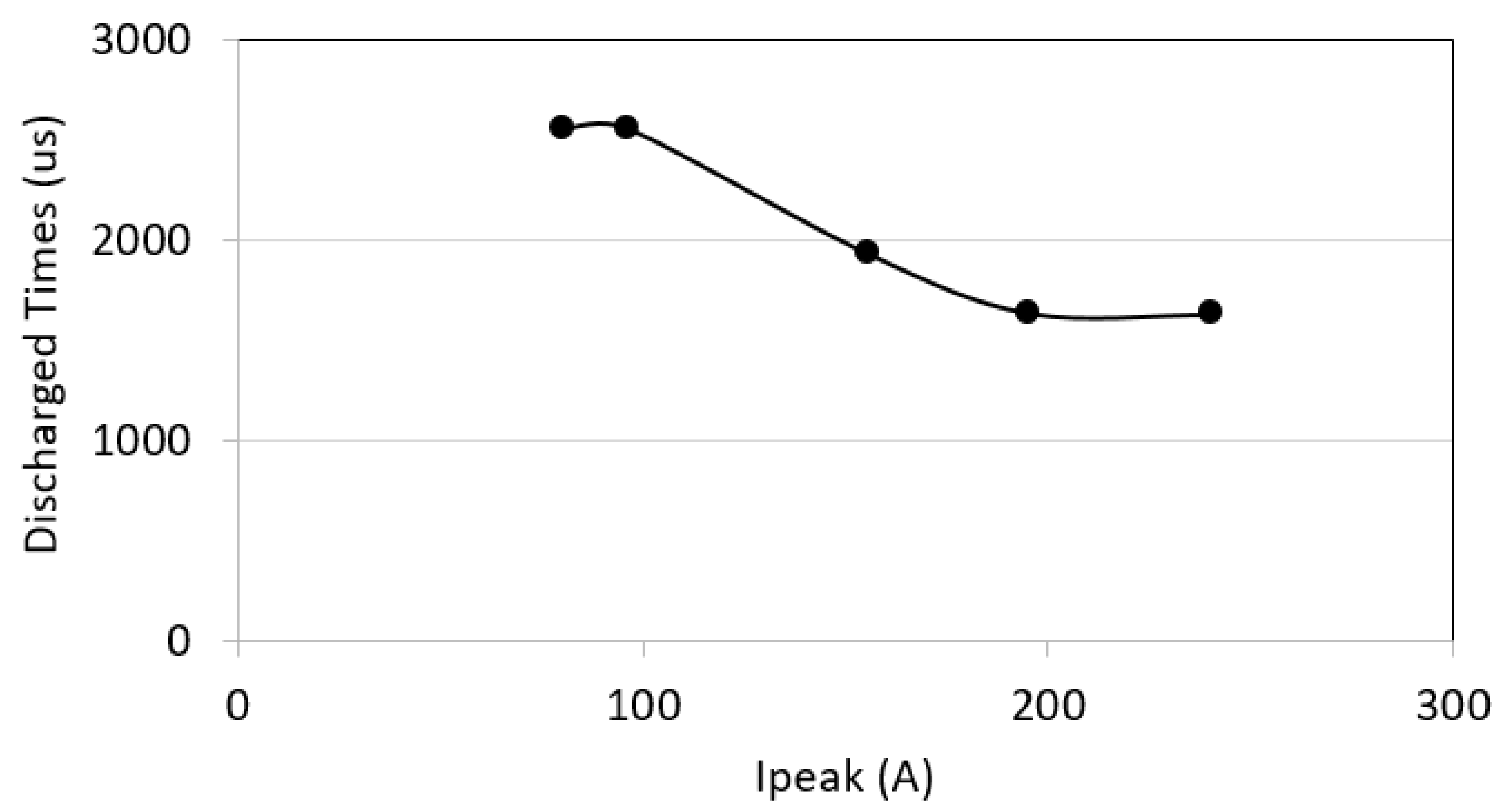
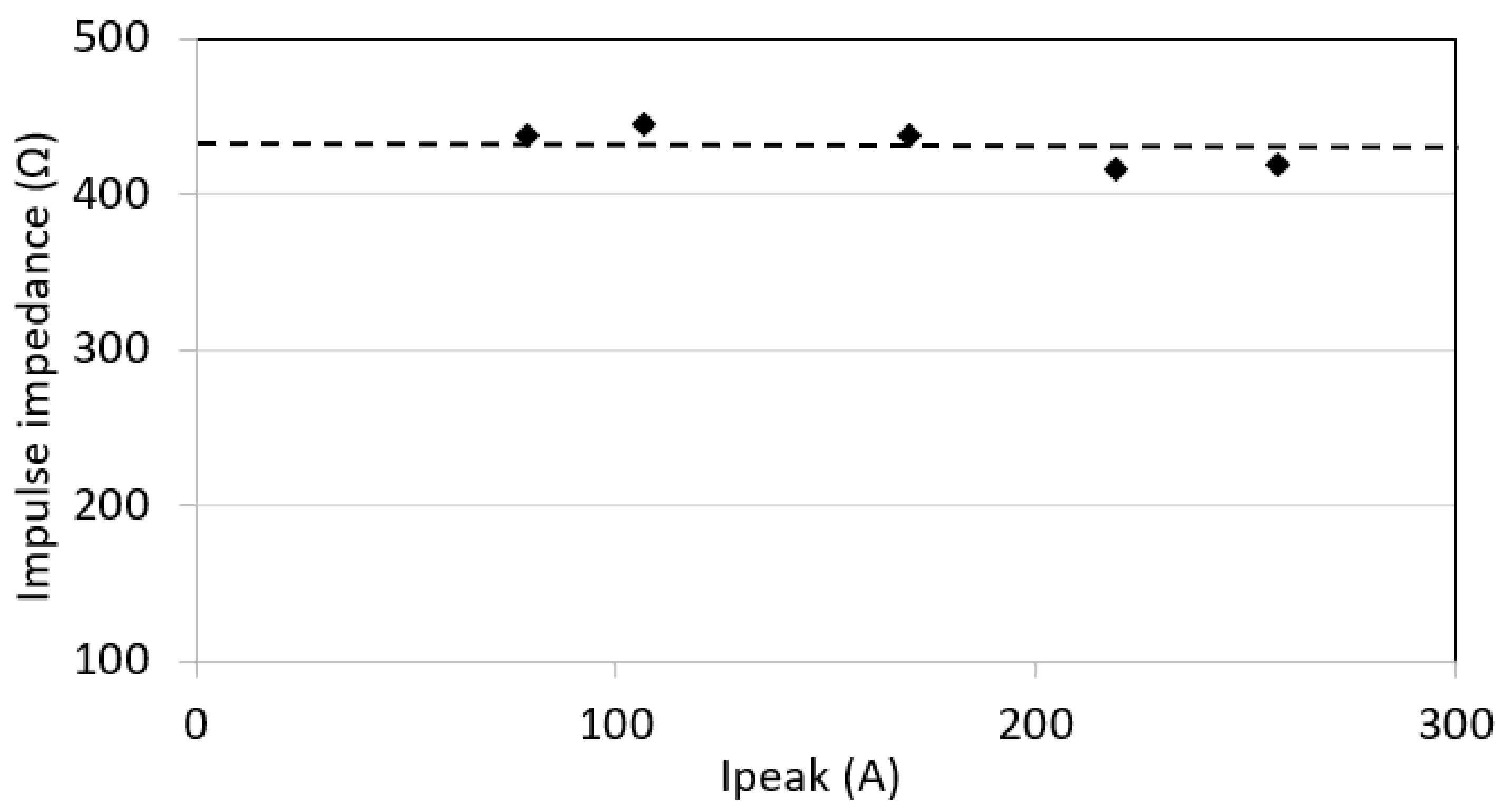
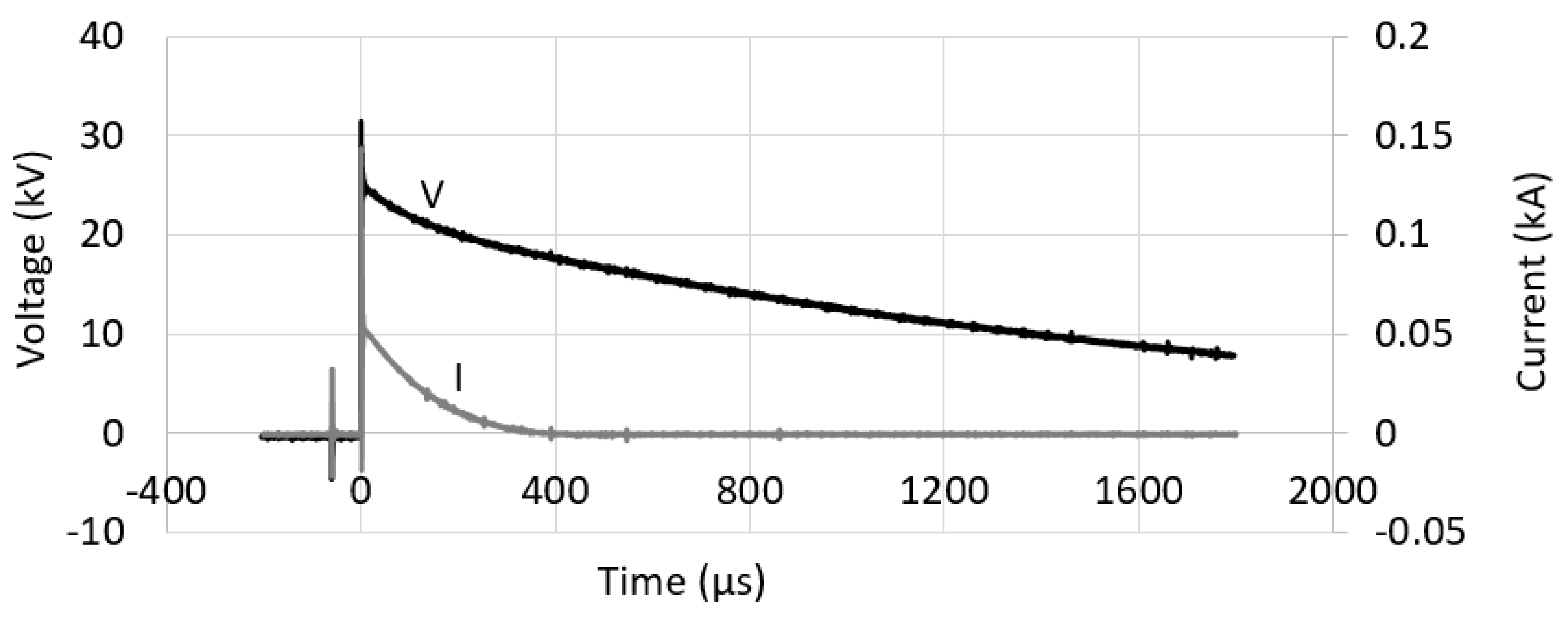
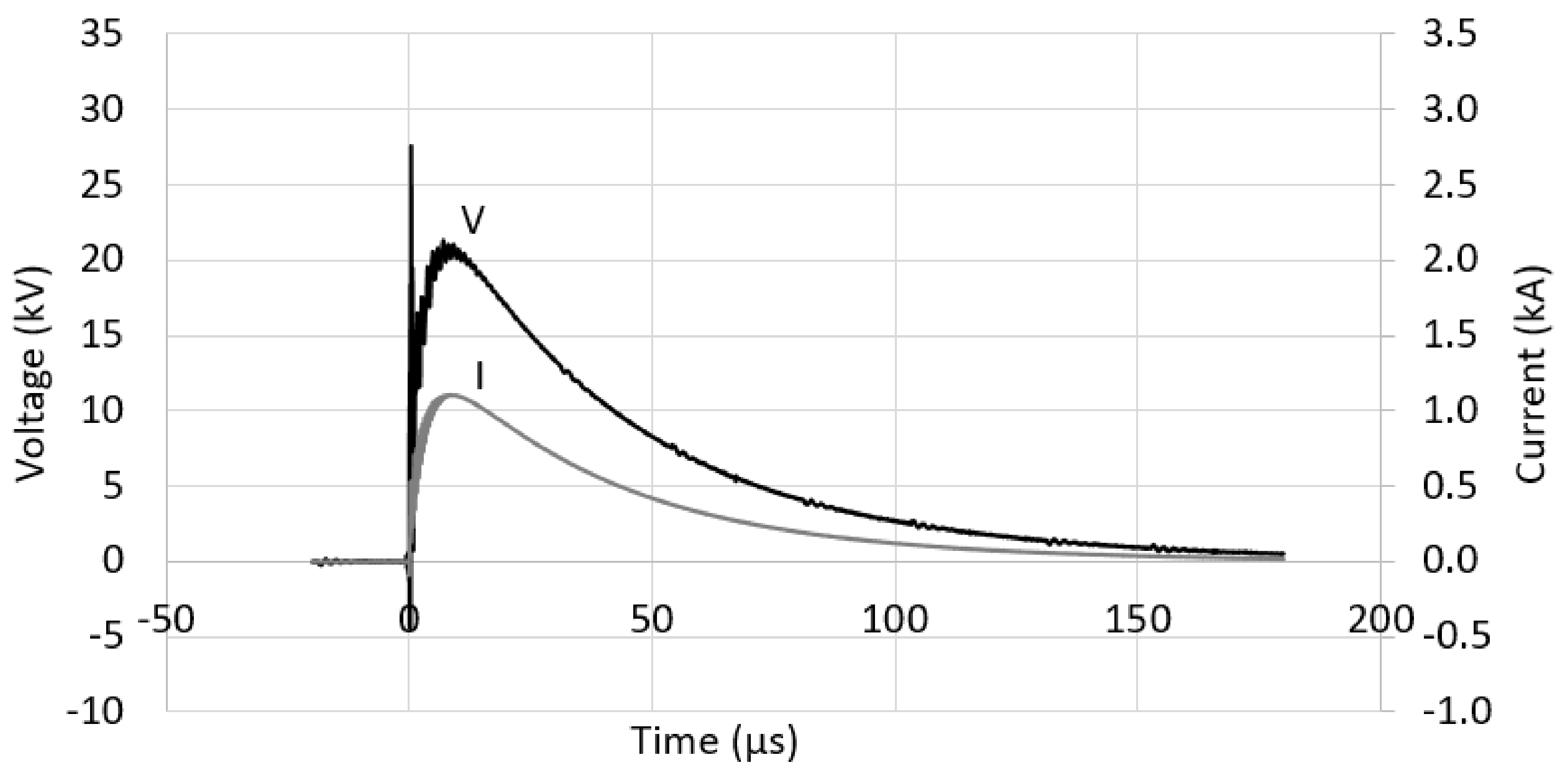
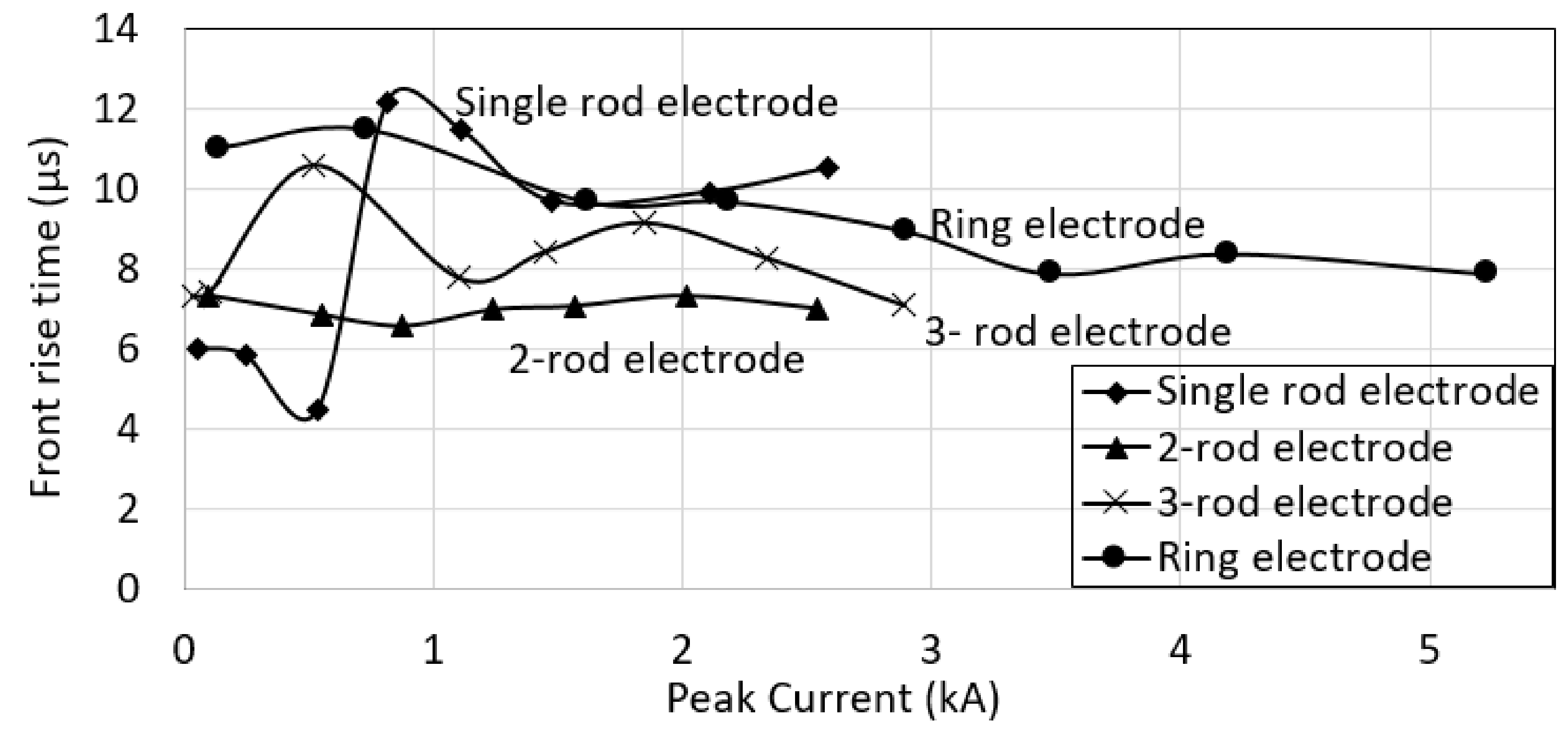

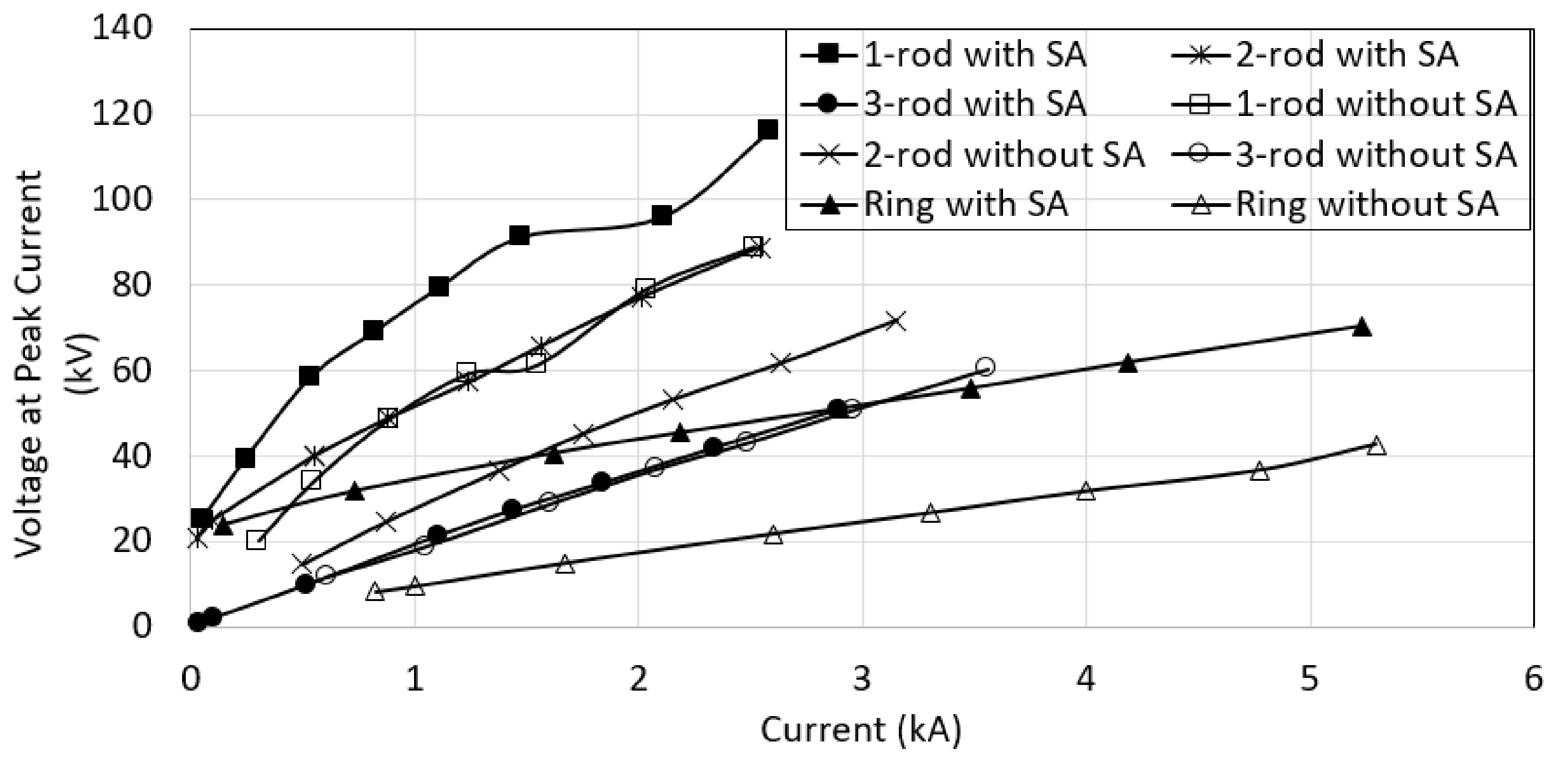
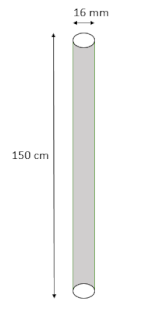 Tested electrode, a single rod, RDC = 104.4 Ω |  Tested electrode, 2-rod electrodes, RDC = 44.8 Ω |
 Tested electrode, 3-rod electrodes, RDC = 28.5 Ω | 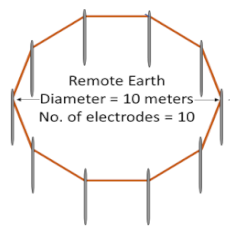 Tested electrode, ring electrode, RDC = 17.2 Ω |
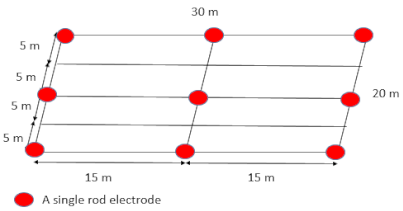 Remote earth, a grid, RDC = 8 Ω | |
Publisher’s Note: MDPI stays neutral with regard to jurisdictional claims in published maps and institutional affiliations. |
© 2021 by the authors. Licensee MDPI, Basel, Switzerland. This article is an open access article distributed under the terms and conditions of the Creative Commons Attribution (CC BY) license (https://creativecommons.org/licenses/by/4.0/).
Share and Cite
Hizamul-Din, H.H.; Nor, N.M. Analysis of Zinc Oxide (ZnO) Surge Arrester Connected to Various Ground Electrodes. Energies 2021, 14, 3382. https://doi.org/10.3390/en14123382
Hizamul-Din HH, Nor NM. Analysis of Zinc Oxide (ZnO) Surge Arrester Connected to Various Ground Electrodes. Energies. 2021; 14(12):3382. https://doi.org/10.3390/en14123382
Chicago/Turabian StyleHizamul-Din, Hanis Hamizah, and Normiza Mohamad Nor. 2021. "Analysis of Zinc Oxide (ZnO) Surge Arrester Connected to Various Ground Electrodes" Energies 14, no. 12: 3382. https://doi.org/10.3390/en14123382
APA StyleHizamul-Din, H. H., & Nor, N. M. (2021). Analysis of Zinc Oxide (ZnO) Surge Arrester Connected to Various Ground Electrodes. Energies, 14(12), 3382. https://doi.org/10.3390/en14123382







